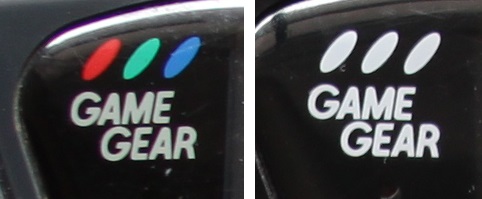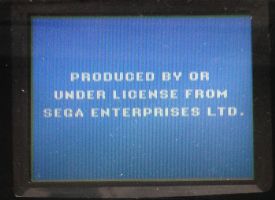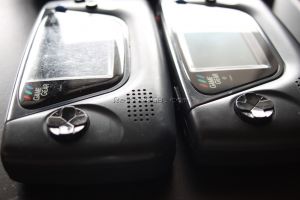Game Gear:Game Gear Model Differences
Page content & researching taken from io55.net's Game Gear page with permission, in collaboration.
There are two Game Gear models, and a variety of revisions within these models.
Models
Models are arranged chronologically.
Sega Game Gear (1991-1997)
The original version of the Game Gear, and the only one to be released by Sega. Easily identified by the 3 ovals above “Game Gear” being in color. Features the usual color screen, poor battery life, leaky and unreliable capacitors, and so on. Compatible with all accessories, unsurprisingly.
Majesco Game Gear (2000-200?)
Majesco's “reissuing” of the Game Gear, when Sega had already stopped supporting the console. Easily identified by the 3 ovals above “Game Gear” being in white. Very similar to the original Game Gear, although it has a vaguely better screen (still poor) and slightly better reliability in capacitors (still poor). Essentially, if one doesn't want to mod their Game Gear at all, the Majesco Game Gear is a bit better. However, it is generally recommended to simply mod one's Game Gear if looking for visual and reliability improvements, as the changes the Majesco makes are almost nil compared to the ones mods can bring. It is also important to note that the Majesco is not compatible with certain interesting accessories such as the TV Tuner or Master Gear converter. However, it is still compatible with a different Master System converter, the "Nuby Converter". Pictures showing the logo difference between Majesco and Sega are below (thanks to RetroRGB for these).
Revisions
While some revisions do exist for the Game Gears, the impacts of each revision are limited to modding. However, there is an unknown motherboard revision or set of revisions which introduces the “TMSS” screen ("Produced by SEGA" screen) to the Game Gear. Despite the fact that the motherboard revision with this is unknown, it is actually possible to identify a TMSS system by the shape of it's screen glass! The screen glass changes do not impact the visual acuity of the screens, so a different method of identification should be used. Simply look at your Game Gear from the side and see if your screen's glass is curved or flat. If it's flat - you have a non-TMSS Game Gear. Images demonstrating this are below (thanks to RetroRGB for these).
References
https://segaretro.org/Sega_Game_Gear
https://en.wikipedia.org/wiki/Game_Gear




